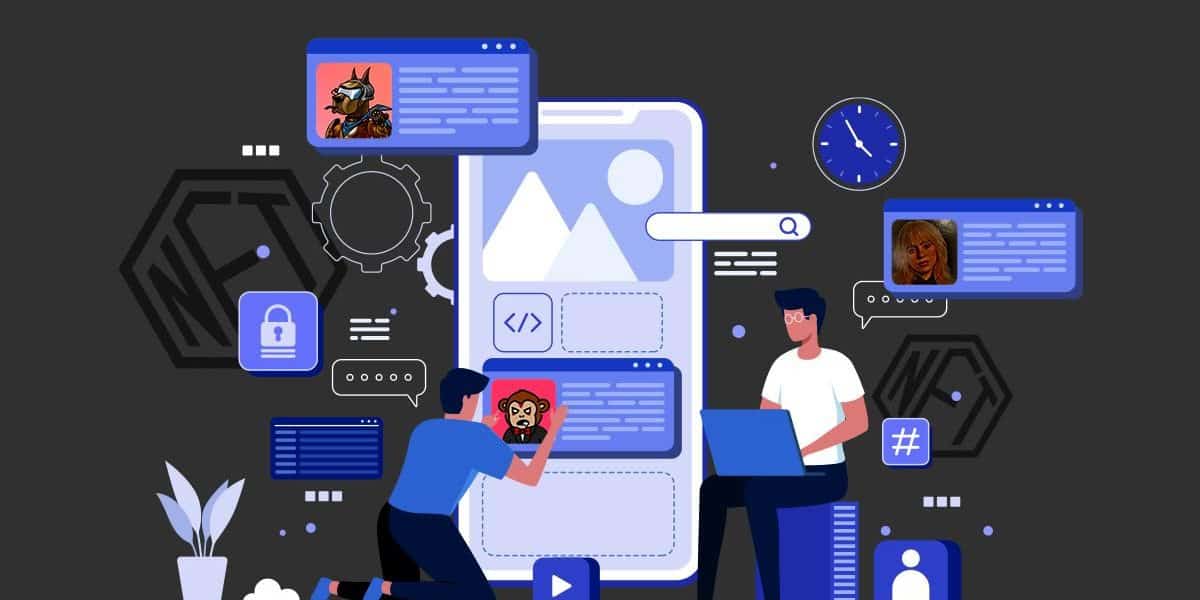How to launch an NFT marketplace? Scale up your NFT business in 2023 with these trends


- Non-Fungible Tokens, talk of the town, had done it again! The revolutionary resource that turned the tables on the traditional market just set a new goal for itself by reaching a market cap of $11.3 billion.
- And believe me, this is just the beginning of their true potential. Into 2023, the still realizing industry of NFTs will make proper upgrades and help newbies with some good money!
NFTs or Cryptographic Assets have been discussed a billion times; however, this blog will describe the future. YES!! NFT marketplace development of all your trendy business reasons will in 2023 be elaborated for your guidance.
The emergence of NFTs and its market
Before we get into the story, let’s get one thing straight. These NFTs have for years developed and offered varied customized solutions to their users, with more than 360,000 NFT holders today! Such a market is responsible for more than 80% of the market value.
Let’s dive into the never-ending saga of NFT development!
The main goal of a cryptopreneur is to release a project that is going to last a long time and meet the trading needs. With each goal set and specification given for the platform, the purpose for which the NFT is deployed changes. Although the original purpose of bringing in the concept of NFT is to give the artist the privilege that they have partially received in the traditional market. Now that the tide has changed, many other verticals have come together to create a digital platform of their own. Some of the business verticals that spread well in the industry are art, music, metaverse, real estate and sports. Their assets include,
- Tickets/coupons
- In-game assets
- Digital collectibles
- Domain name
- Physical assets
NFT trends that will skyrocket in 2023
The blockchain-backed digital assets are unique, indivisible, rare and most importantly intangible. White-lable solutions, which provide a market-ready, customizable solution for any NFT aspirant to launch their own NFT marketplace, are now an available customization. Here we will take a look at some of the very likely NFT trends that could benefit in 2023.
- NFT collection
- NFT marketplace
- NFT gaming industry
- NFT in decentralized finance (DeFi)
- NFT in Metaverse
Known Features to Launch Working NFT Marketplace
To list the achievements of the industry, the blog is not enough! So, let me just dive right into the must-have feature. The NFT platform, developed with white-label solutions for any NFT-based project, as long as they are linked to blockchain technology, requires basic functions that are essential for an agile platform.
- NFT Dashboard/ NFT Collections
- Blockchain technology
- Emboss NFTs/ create NFTs
- Compatible crypto wallet
- NFT token standard
- NFT Storage Software/ NFT Metadata
- Modern search filters
- Analysis tool
- Royalty rewards
- Reviews and ratings
- Marketing support
In order to get million dollar platform work, there are much more extensive features that are integrated into the platform. They can be varied protocols for advanced security, platform verification mechanisms, such as proof-of-stake, etc., game mechanics such as play-to-earn (P2E), etc. It is always recommended that to achieve the scale of your project in the market, it mandatory to choose the right development company that is flexible for your request.
NFT platform user roles
A trade takes place on an NFT marketplace, and we all know this. In order to make the trade happen, it is crucial to designate the user role. The NFT platform has categorized these roles, and has encoded their specifications in a smart contract, so that the platform remains decentralized and automated.
Decided to develop the NFT marketplace of your dreams, consider these for an impeccably comfortable business. Explained below are the key functionality or user roles of three main personas in an NFT marketplace: Buyers, Sellers and Administrators.
- NFT buyers
- NFT sellers
- Marketplace Administrator
Expertly built technical stack for your NFT platform
Two stones down and one to go! The last to a complete product is the technology stack for an NFT marketplace development. While different blockchain networks require different protocols and integration, some of the much sought-after blockchain technologies on the market are based on their scalability, security, and the unique relevance it offers to the NFT community. They are Ethereum, Solana, Cardano, Polygon, NEAR and Avalanche, while you can also go for other options.
Listed below are the technology stacks you must have for a competent NFT marketplace
- High storage platforms
- NFT standards
- Smart contract integration
- Front-end development
- Back-end development
- Third Party API Services
Development steps for your NFT platform
The following is how white-label NFT marketplace development move forward with your project. Their skilled developers take notes of all your specifications and make sure to design and develop them in an intricate manner. Thus, the product is guaranteed to stay on the market shelf for longer than expected!
- In-depth market research for a much better understanding of the industry and the completed project.
- Specification of the type of NFT platform is critical. Having a clear idea of what the platform is going to help the developers iterate the structure of the platform much defined.
- Having to hire an NFT marketplace development company and an experienced team will make the platform withstand any problem in the industry. This is because of their years of experience in the blockchain industry.
- An appropriate merging of the separately developed technology stacks and the necessary third-party API integrations, such as storage software, security protocols, etc.
- The appearance of the platform is just as important as the technical development, as these will bring the target audience to the platform. This will include all the interactive and user-friendly features along with the logical operations required for the NFT platform.
- After all the integrations, development and user roles are specified perfectly in the automation smart contract, they are ready to be tested.
- The test stage is where the project will be subjected to several test software to rule out any bugs or weaknesses of the platform. They are corrected and the process is repeated until they are deemed flawless and flawless.
- Deploy the platform to the server and live the project to start trading in the market.
- The last step, often swings the platform is maintenance. Regular support and maintenance of the platform keeps the forum on trend.
Entrepreneurs can try this hack to screw up their development, they can choose the right developers for their nft platform by choosing one from top 10 NFT marketplace development companies.
Final thoughts – Why create an NFT platform in 2023?
NFT platform development is a journey that is currently sailing in an ever-growing market. When building your platform, scaling up your development remains a key factor. With all the milestones that the platform went through, it is necessary to understand that the above successful NFT trends are only a few cases.
The industry is incredibly large and embraces any unique developments that enter the decentralized environment as long as they remain relevant. In conclusion, this blog has covered quite a few points about the NFT trends in 2023, and a number of ways to launch NFT marketplaces. Bring your monumental idea to the digital commerce space and let the experts decipher the best place for your project to make money!






















